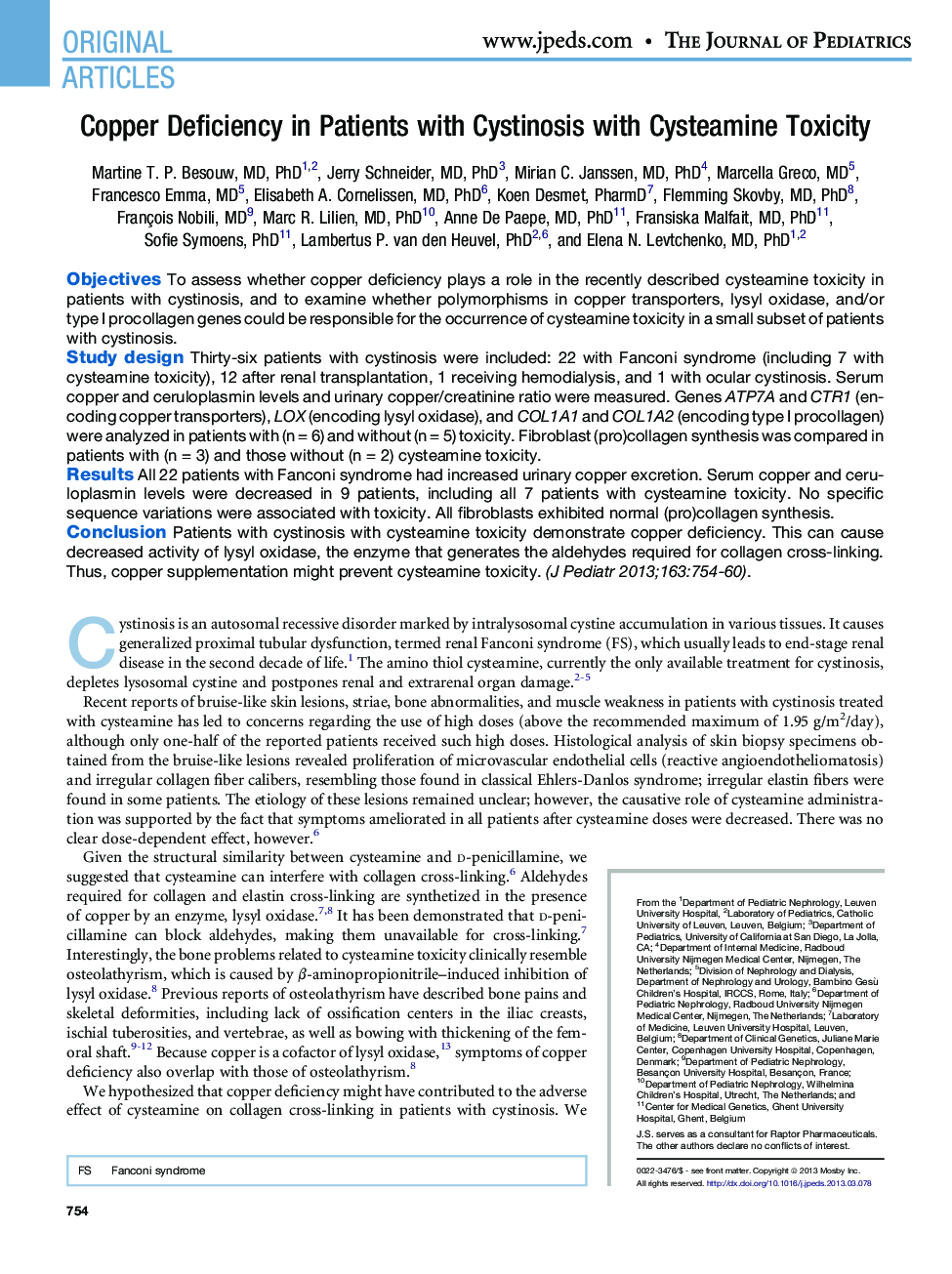| Article ID | Journal | Published Year | Pages | File Type |
|---|---|---|---|---|
| 6222731 | The Journal of Pediatrics | 2013 | 7 Pages |
ObjectivesTo assess whether copper deficiency plays a role in the recently described cysteamine toxicity in patients with cystinosis, and to examine whether polymorphisms in copper transporters, lysyl oxidase, and/or type I procollagen genes could be responsible for the occurrence of cysteamine toxicity in a small subset of patients with cystinosis.Study designThirty-six patients with cystinosis were included: 22 with Fanconi syndrome (including 7 with cysteamine toxicity), 12 after renal transplantation, 1 receiving hemodialysis, and 1 with ocular cystinosis. Serum copper and ceruloplasmin levels and urinary copper/creatinine ratio were measured. Genes ATP7A and CTR1 (encoding copper transporters), LOX (encoding lysyl oxidase), and COL1A1 and COL1A2 (encoding type I procollagen) were analyzed in patients with (n = 6) and without (n = 5) toxicity. Fibroblast (pro)collagen synthesis was compared in patients with (n = 3) and those without (n = 2) cysteamine toxicity.ResultsAll 22 patients with Fanconi syndrome had increased urinary copper excretion. Serum copper and ceruloplasmin levels were decreased in 9 patients, including all 7 patients with cysteamine toxicity. No specific sequence variations were associated with toxicity. All fibroblasts exhibited normal (pro)collagen synthesis.ConclusionPatients with cystinosis with cysteamine toxicity demonstrate copper deficiency. This can cause decreased activity of lysyl oxidase, the enzyme that generates the aldehydes required for collagen cross-linking. Thus, copper supplementation might prevent cysteamine toxicity.
